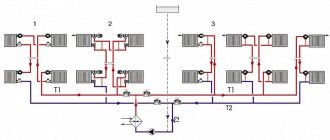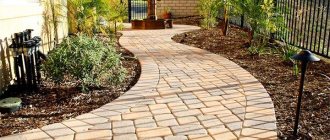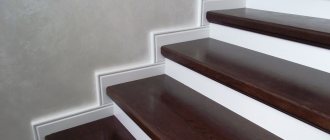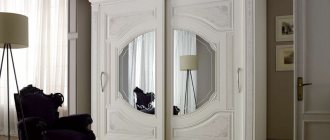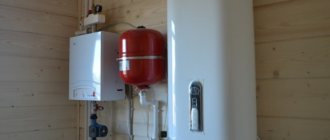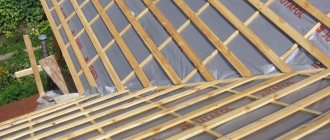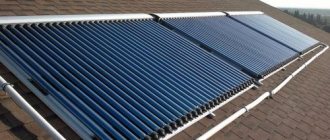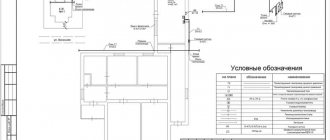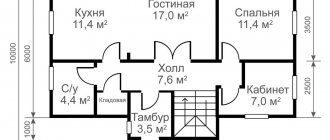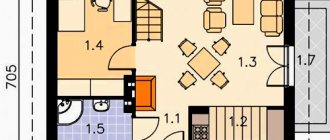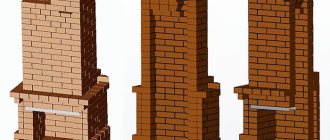Fireplace glass is not only a beautiful accessory, but also a very convenient device that makes it possible to expand the capabilities of the fireplace. But equipping an old fireplace with such glass is often quite difficult - on the one hand, not every glass is suitable for installation, and on the other hand, not every glazier can boast of the ability to work with such material. But, as you know, there are no hopeless situations, and if the desire to make a glass door for your fireplace is so great, you can find a way out of this situation.
What you need to know when building a fireplace using aerated concrete
Aerated concrete is a suitable masonry material for a fireplace, but with some restrictions: for example, it cannot be used to construct a firebox.
Aerated concrete is used as a load-bearing and finishing material, and as thermal insulation of the side walls of the firebox. The advantage of aerated concrete over brick is its low price and high speed of work. However, if you do the work yourself, you need to know the features that will allow you to save money, but not lose quality. What is this article about?
Let's start making doors
It is important to understand that the finished product must meet operational requirements and provide the necessary safety. That is, on the one hand, openings should be provided for air access to the firebox (located in the lower part), and on the other, care must be taken to protect the room from:
- smoke;
- sparks;
- burning smell.
The main components of a fireplace door:
- outer frame;
- opening sash;
- latch;
- adjustable plug with outward facing regulator;
- loops;
- pen;
- glass.
As an example, we use the basic, most simple version shown in this drawing:
Is it possible to use aerated concrete to build a fireplace?
The basic requirements for a fireplace come from its purpose: heating and interior decoration. Since fuel burns in the firebox and it is placed in a visually open space, the material for the fireplace must have:
- fire resistance;
- aesthetics.
Aerated concrete is a non-flammable material, but it is not fireproof!
Consequently, the choice of aerated concrete as a heat-resistant base for a fireplace - firebox - is impossible. But it is perfect for creating a place for a fireplace. Aerated concrete blocks are not used for laying an open fireplace, since with this design the heat goes far beyond the firebox and the aerated concrete blocks will heat up.
A decorative fireplace or a closed, finished fireplace insert can be lined with aerated concrete blocks.
Since aerated concrete is easy to process, the block is easy to saw, grind, and make complex rounded shapes. Therefore, it is most suitable for expressing complex design decorative solutions.
Step-by-step instruction
If you want to create a fireplace in your home yourself, you should consider several rules using the example of a plasterboard portal:
- Before you make a fireplace yourself, you will need to draw drawings for the future design. After the sketch is ready, decide which wall the portal will be located near in the room and make calculations, marking the location for the base of the portal.
- If you want your fireplace to be in a corner, you will need to first assemble the base and then mount the structure into the wall. Other types of fireplaces involve assembling the frame part directly onto the wall.
- Cut the metal profile taking into account the markings on the wall. Then you can assemble the back part of the portal. The base is attached using self-tapping screws; dowel-nails are useful for attaching the frame to the wall.
- Assemble the base gradually and constantly check the drawing. Otherwise, you may get confused in the calculations and end up with a crooked design. To give the portal stability, place spacers every 30 centimeters. If your fireplace has an arch, you should make cuts on the sides of the profile, after which you can begin to shape it into an arc.
- Now you can cut the drywall. A hacksaw or a regular jigsaw is suitable as a tool. If you do not have these tools, then take an ordinary knife. Measure each side before cutting. The parts are screwed to the base using a 25 mm self-tapping screw.
- Now you have the base for the decorative portal ready and you can begin cladding the structure.
- Many apartment owners install their fireplace in the wall unit. There is a TV above the “hearth”, which looks very impressive. To equip your project with lighting, you will need a connection to the power supply or regular candles.
Finishing
Aerated concrete masonry will be attractive if, at a minimum, its surface is smooth and the seams are even. Further finishing or cladding of the surface will provide aesthetic appeal.
Since aerated concrete is used at most as a material for lining a metal firebox, that is, it is not exposed to high temperatures, the surface finishing does not necessarily have to be made of fire-resistant materials. High-quality plastering or cladding is sufficient.
To give the surface an attractive appearance, the following materials are used:
- Plastering followed by painting. Plastering the surface is a budget option, the advantage of which is its low price.
- Facing with tiles or bricks. The costs of facing material are compensated by the representative appearance of a beautiful fireplace.
Thus, you can both save money on masonry finishing and turn the fireplace into the central piece of a chic interior.
Wholesale trade
About glass for fireplaces, protective screens for fireplaces
The combustion chamber of a fireplace poses a certain threat to the room due to the large number of sparks, embers emitted by cracking wood and hot ash. It is inconvenient to close the opening with a steel or cast iron damper; in addition, all the beauty of the flame disappears and heat transfer decreases.
Therefore, modern fireboxes use glass for the fireplace, which is strong enough not to shatter when closed, and heat-resistant to withstand the heat of the flame.
FIREPLACE GLASS DOOR CONSTRUCTION
There is currently no alternative to using glass valves:
- Doors for fireplaces made of heat-resistant glass do not expand or deform from heat, like cast iron or steel, thanks to this it is possible to obtain minimal gaps and a high quality seal between the frame and the edge of the door;
- Fireproof glass for fireplaces does not burn or oxidize and retains its original appearance throughout its entire service life;
- The main thing is that a fireplace door with glass allows you not only to enjoy the play of fire, it is the only possible way to control the combustion process so that the flame does not turn into smoldering with the formation of carbon monoxide.
For a small country house or cottage, a cast iron fireplace with glass is most often chosen. In addition to the beautiful appearance, this choice has a purely practical advantage - heat-resistant glass for the fireplace ensures faster and more uniform heating of the room. The champion in terms of heating efficiency is a round fireplace with glass, which is capable of heating and simultaneously lighting the room.
MAIN VARIETIES OF HEAT-RESISTANT GLASS
- Quartz glass options are among the most heat-resistant and refractory;
- Borosilicate glasses;
- Multilayer glass sheets coated with cerium oxide.
Protection from external influences
Since aerated concrete has high water absorption, its use outdoors requires protective measures. A canopy or gazebo will protect the outdoor fireplace from direct exposure to snow or rain. However, high humidity outside still exists. There are three common ways to protect aerated concrete surfaces:
- Facing;
- Hydrophobization;
- Waterproofing.
The cladding can be either tile or brick. In the first case, no additional protection is required; in the second, hydrophobic impregnation can also be applied to the brick.
Hydrophobization involves the use of a special water-repellent composition (impregnation), which does not form a surface film, but penetrates several millimeters into the protected surface.
Waterproofing is not suitable for decorative design elements, which is the fireplace.
An important rule for using aerated concrete blocks when building outdoor fireplaces is to build a high foundation 10–20 cm above ground level. Such that the earth and puddles do not come into contact with the blocks under any circumstances.
So, subject to the construction and finishing technology, the use of aerated concrete blocks allows you to save money on bricks and speed up the laying process.
Material
Metal (often stainless steel or cast iron) is used as the basis for the fire door for a stove with glass. According to the characteristics of experienced craftsmen, cast iron is more preferable: it is distinguished by durability, it is not afraid of high temperatures, it is easy to clean, and it is quite durable. Stainless steel will become very hot when the stove is fired; it is not intended for open fire and will soon warp.
From glass
Glass doors are available in single or double door versions. One oven door usually has a large window to view the fire. There is no difference in functionality. A lot depends on taste here. In two-door ovens, the design is close to ancient forms. It is possible to look at the fire through 1 large glass or 2 small ones. Much will depend on the preferences of buyers and the interior of the room. Advantages of a stove door with glass:
- Glass can withstand the influence of elevated temperatures for a long period of time - this positively distinguishes it from devices made of steel. It is superior in fire resistance to cast iron.
- Fireproof special glass for stoves and fireplaces is approximately 0.4 cm thick and can withstand temperatures up to 2000 degrees.
- Compact dimensions and low weight.
- The main advantage of a glass oven door is the ability to look at the flame. Such an option will outweigh any disadvantages, forcing stove users to purchase stove doors made of a similar material, despite the short period of use and high price compared to solid metal doors.
Flaws:
- The creation of glass doors for a furnace is considered to be a more labor-intensive process than production from a solid sheet. To avoid cracks during use, a little space is left when installing with a seal. The doors will trap sparks from the fire, preventing them from entering the room. Glass inserts are designed so that air blows over the material, preventing soot from lingering on it. Otherwise, the glass will be smoked.
- Fragility of the material. Fire-resistant glass sometimes cracks with minor impacts.
- The price of a device with glass inserts is higher than one made of solid material.
- Glass door ovens are much less efficient than cast iron ovens because heat dissipates through the glass. The larger the material, the less efficient the stove is at heating the room.
Important! Often a stove door with glass is combined with a metal device. In such situations, the frame is made of steel and the door is made of glass.
We suggest you familiarize yourself with Clay mortar for laying a stove: how to prepare it, where to get clay, how to make the composition, clay mortar, how to dilute it correctly
This category involves doors made entirely of metal. The installation process is quite simple and does not have any complications. The products retain heat well and are distinguished by increased fire safety. When the need arises, it is possible to make them yourself with minimal expense. Key advantages of metal products:
- Reasonable price. Compared to a stage on a glass device, it is much smaller, which is why it has a certain prevalence.
- Durability and reliability of such devices. With proper care (regular anti-corrosion treatment using paints that are classified as fire-resistant), they will last a long period of time without causing discomfort to the user.
Important! Despite the fact that such doors have their own consumer, the demand on the market is quite low, since they do not provide the opportunity to look into the flame
Cast iron door
Main advantages:
- Excellent interaction with elevated temperatures.
- Durability and reliability. The cast iron fireplace vent door can withstand any load.
- Beautiful models can be easily created from cast iron.
All this optimally finds its own application in this area; many firebox doors are made directly from cast iron.
Fireplace in a house made of foam blocks
For “aerated concrete” the foaming agent is a mixture of Al, Mn, Mg, Zn, etc. This is not food-grade Al at all, whatever the technologist wants is used, the main thing is that the “dough rises”, they also use neutralization reactions to produce gas, respectively, use any chemical . waste, such as drainage from car batteries. Also additives can be slags and ashes of various origins. As a hardening accelerator, ordinary gypsum is most often used, which greatly reduces the heat resistance of the product. Resins (PVC, polyester, epoxy), liquid polymers, org. are used as plasticizers. adhesives, as well as whatever the technologist thinks of. Harmful or beneficial? the main thing is to be cheaper.
Alexey, why did you decide that in the USSR it was prohibited to use aerated concrete in housing construction?
autoclave (synthetic hardening) - hardening in a saturated steam environment at a pressure above atmospheric;
non-autoclave (hydration hardening) - hardening under natural conditions, during electrical heating or in an environment of saturated steam at atmospheric pressure.
According to the type of binder and siliceous components they are divided into: according to the type of main binder:
on lime binders consisting of lime-lime more than 50% by weight, slag and gypsum or cement additives up to 15% by weight;
on cement binders in which the Portland cement content is 50% or more by weight;
on mixed binders consisting of Portland cement from 15 to 50% by weight, lime or slag, or slag-lime mixture;
on slag binders, consisting of slag more than 50% by weight in combination with lime, gypsum or alkali;
on ash binders, in which the content of highly basic ash is 50% or more by weight;
by type of silica component: on natural materials - finely ground quartz and other sands; on secondary industrial products - fly ash from thermal power plants, hydraulic removal ash, secondary products from the enrichment of various ores, ferroalloy waste and others.
The most important question: what is used as a foaming agent? Surfactants used in washing powders, or polymer PPR, PPS, PET, PET, HDPE, PVC, LDPE, or phenol-formaldehyde resin, polyester, melamine-formaldehyde or regular modified starch, etc.?
If you noticed, the USSR collapsed a long time ago, and the technologies that were then and now are different.
For example, during the USSR, a whole series of block houses was developed for areas with a harsh climate, so according to the technology, phenol-formaldehyde resin was added to concrete, which made it possible not only to increase the porosity of reinforced concrete products, but also to use cast, under-dried blocks at sub-zero temperatures, it would seem that everything is fine, and A lot of houses were built, but the statistics are inexorable; it turned out that among the people living in these houses, the percentage of cancer diseases is higher than among miners and chemical industry workers. Moreover, these houses are still standing, and no one began to demolish them because... Today's hardener concentrations are very low.
The polymer industry of the USSR, and also the construction industry, lagged behind due to the sluggishness of the system, the introduction of something new was difficult, and for the foam blocks of that time they did not use anything other than resins, so they were not used because They really weren't safe. although quite edible polymers already existed at that time.
And today, please, how many polymers do we eat, drink and give to children and nothing, everyone is alive and the statistics are still in favor of polymers.
The situation in the EU is now completely different, due to the globalization of markets and the search for new demand, the industry is forced to produce a fairly high-quality and harmless product, because there simply won’t be demand, but if it is beneficial for someone to suppress the production of a competitor, then it will come to a state ban on the use of specific products, for example, now various plastics (which have been used for decades in medicine) have begun to be banned, only because that such leading companies as 3. Dan. began to produce their own undeveloped polymers, i.e. a kind of monopoly. Therefore, in the EU, aerated concrete is really not particularly favored, because... everything is included in specific standards, which, unfortunately, are currently lobbied by global corporations.
Stages of work
The first thing to do is cut out the corner. And then give the desired shape to the structure. In order to carry out this operation, you need to lay the corner on a flat surface, check the correctness of all connections, and then weld all the necessary parts. After finishing the work, you need to inspect the door again for correctness and compliance with the form.
Then you need to mark the inner contour of the frame on a sheet of metal. After finishing the markings and receiving all the measurements, you need to increase them slightly and leave a small allowance on each side. Taking these marks into account, it is necessary to cut out the part using a metal grinder. Since the door is planned with glass, it is necessary to have a piece of heat-resistant material that will be mounted.
Using the same tool, glass is cut to the required dimensions. Next, you need to weld the curtains to the frame. After this, you need to grab them to the common door frame. When this operation is completed, you need to make sure that nothing interferes with the opening and closing of the door. If this condition is met, then final welding can begin. The door handle is attached last.
Fireplace made of foam blocks
If you have a country house, then having a fireplace is a noble cause; you always want to sit next to it with your family and friends, but what about in a city apartment? Give up the dream of him? The idea of a decorative false fireplace has occurred to people for a long time, but not everyone knows the intricacies of this simple matter. Studying furnace science, of course, is not required, but there are still some subtleties and nuances. The material will be the same favorite and well-known durable and reliable foam concrete. To build it, you need to purchase: foam blocks, special glue, putty, trowel, wood slab, spatula and hacksaw. The material is quite good, light, lends itself perfectly to a regular hacksaw, first you need to choose a place for it, to simulate fire in it, you also need to take care of the wiring. Choose the appropriate dimensions for it, which your living conditions allow; it is best to make a sketch in order to have a better idea of how a fireplace made of foam blocks will fit with the rest of the interior.
- Masonry
- How to properly finish
- Conclusion
Simulated flame
Anyone can create a decorative fireplace, but creating a fire is a difficult task. Special electrical appliances are characterized by high cost, but they will imitate burning wood, accompanying the process with the sound of crackling.
Some people depict the flames as in Pinocchio. This method is a simple decorative design depicting burning firewood. Choose small pictures and place them on the back surface of the firebox.
You can use it as an imitation of a light bulb flame or a New Year's garland. A plasterboard fireplace with a garland wrapped around real logs looks great. A mirrored firebox with candles will help create a beautiful and cozy atmosphere.
Installing a small table lamp in the fireplace niche is also an original idea. Cover the firebox with yellow translucent film and you will achieve a great effect. For this option, you should consider the option of masking the wire, because the light bulb must be turned on and off.
If you don't have room in your fireplace to mount items, you can place treated logs with pretty candlesticks right in front of the fireplace.
Masonry
A foam concrete slab with a base height of no more than 10 cm is laid on the floor using glue. Vertical blocks for the sides are installed; for a wider structure, foam blocks should be laid horizontally. The block is easy to saw, so it can be sawed into bricks, you will get an imitation of brickwork, the parts can be fastened with the same glue, or a mixture of sand and cement. After installing the side walls, a block slab is glued on top, which will serve as the top shelf, the frame structure is ready. If the space for the firebox is too large, then the front part is cut out of a plywood sheet, also a window to fit the size of your firebox, the vault can be made into an arch or simply flat. Tile sheets, like blocks, are also seated with glue; for the front panel, you can use corrugation, coat it well with glue and apply putty, coat the entire surface with it, especially the seams and joints. Using a spatula, the composition is placed on the trowel and then a layer of putty is applied from bottom to top, leave the first applied layer until completely dry, the next layer will be the finishing layer. When the work is dry, go over it with sandpaper and you can decorate.
Preparation, list of tools
Before starting work, you need to determine and mark the place that the new stove will occupy.
The chimney pipe should be no closer than 15 cm from the roof rafters.
If you are doing masonry for the first time, professional stove makers advise you to practice in advance by making a model of the future stove from prepared bricks. Naturally, without a solution. This minimizes possible risks during real masonry, allowing you to learn from your mistakes, which can still be corrected in the layout.
The stove foundation requires preliminary waterproofing; its area must exceed the area of the stove.
When laying a new row, you need to control the absolute verticality of the walls.
To build a brick kiln, the following tools are needed:
- plumb line;
- trowel;
- roulette;
- putty knife;
- Bulgarian;
- knitting wire;
- building level;
- metal strips, corners;
- containers for cement and clay mortar.
How to properly finish
The fireplace is called decorative, so due attention should be paid to the decoration, it should become a decoration of your home and this is within your power. Its texture can be made very varied using putty; using a foam sponge, the putty is applied in jerks and a kind of rough surface is obtained. If you want something more, use acrylic paint of a dark color, the surface is painted with paint and immediately wiped with a dampened rag, then, lightly touching it, walk over it with silver or gold paint, thereby creating a speckled plane. For decoration, you can take drywall and cut out rectangles in the shape of bricks, but make the shape incorrect, and the laying of foam blocks will seem old. Fill the sides and top with a spatula, deliberately making the surface uneven, and after drying, paint it in the color you like. There is a special beech-colored putty on sale, intended for wood. Make an imitation of a stone surface by performing chaotic, disorderly movements, apply putty to the side parts of the fireplace using a spatula, imitate stonework with a small stick and leave until dry. The result will be a stone texture; for a natural look, you can paint the masonry with black or dark brown acrylic.
Door specifics
If you intend to make a door with glass inserts, you should first of all decide on its style
It is important that it matches the overall decoration of the room and the specifics in your particular case. So, for example, in small rooms it makes sense to make a double-leaf insert or a rising one to save space.
Both of these options are ideal for a corner fireplace. The main point that should not be forgotten is the selection of glass. It must have a heat resistance of at least 800 degrees - it is to this temperature that the flame usually flares up.
The prepared glass is inserted into the metal frame of the door itself, and that, in turn, is attached with hinges to the outer frame, which is fixedly fixed in the opening of the firebox. Wherein:
- a seal is installed on the inside to prevent smoke from entering the room;
- At the bottom of the outer frame, holes are made with adjustable plugs for air access to the firebox;
- Keep in mind that metal tends to expand greatly when heated, so the gap between the transparent insert and the frame is not made too large;
- When starting production, remember that the glass cannot be fixed tightly, because during installation it will need to be removed from the door;
- strips of fiberglass are inserted into the frame to seal it.
Chimney for a fireplace in a house made of aerated concrete
The main requirement on which the operation of chimneys in principle depends is the thermal insulation of the walls of the shaft. When the route is warm throughout its entire continuation, hot gases rise and increase traction. Lightweight cellular expanded clay concrete is ideally suited for creating ventilation and smoke ducts: this stone is easy to cut and also has excellent thermal insulation properties. It is convenient to install a chimney in a wall made of aerated concrete: it can be installed both inside the masonry - vertically, and through it - when you need to install a horizontal outlet to the outer pipe.
Aerated concrete is a practical material. Using it, you can make your life easier. For example, at the first stage of building a house box, there is a reason to abandon the construction of a fireplace. This is not an essential item, but rather an expensive accessory for luxury living rooms, which has all the hallmarks of a cult hearth. If desired, it can be constructed later - already during the operation of the mansion, when the financial burden associated with construction will decrease.
- Types of fireplace chimneys
- Do you need a brick chimney in an aerated concrete house?
- Advantages and disadvantages of chimneys made of aerated concrete blocks
- Features of installation of modular steel chimneys
- Aerated concrete house calculator
Performing calculations
When drawing up a plan, it is necessary to calculate the amount of materials. In particular, how many foam blocks will be needed. To do this, you need to know the dimensions of the future house and its layout. They depend on the area of the construction site, the wishes of the owner and his financial capabilities.
The algorithm for calculating the number of foam blocks for load-bearing walls is as follows. The length of the perimeter is determined and multiplied by the height of the house. We get the area. Openings (windows, doors) are subtracted from it. What remains is divided by the area of the side of the block. To the resulting number of units you need to add 20-30 units for additions and defects. The same applies to walls.
You can do it differently. Knowing the length of the foam block, as well as the length and width of the house, you need to calculate how many blocks will lie in one row of masonry. The height of the building and the block determines the number of rows and the total number of blocks. You need to subtract from them how much is needed for windows and doors, and add the technological reserve.
Types of fireplace chimneys
There are different classifications of chimney shafts.
- By type of materials. There are brick, steel, ceramic.
- By choosing the base for installation. There are root and superstructure. Indigenous - those who stand on an independent foundation. Mounted - cantilever type, resting on the hearth.
- By location: indoor and outdoor structures.
- According to the complexity of the design - simple and sleeved. The second type includes chimneys with internal inserts. Sleeves come in different varieties and are installed for different purposes. Some liners provide a given level of thermal insulation, while others help protect the surface of the shaft from the effects of harmful gases.
There are multi-layer chimneys. These models combine several types of protection. These products are called coaxial.
We will discuss the advantages and disadvantages of various types of chimneys for fireplaces, as well as the features of their operation in an aerated concrete house below.
Selection and construction of the foundation
The foundation for a foam block house can be of different types. More often they are made tape or monolithic. Often they choose piles or reinforced concrete blocks. The choice of base is influenced by the load (calculated approximately) and soil characteristics. Freezing levels and groundwater levels must also be taken into account.
Do you need a brick chimney in an aerated concrete house?
When building an aerated concrete house, a dilemma most often arises: what material to use to build a fireplace and a chimney for it. Traditionally, for hundreds of years, brick has been used to build such fireplaces.
However, such a fireplace is heavy. Its weight together with the pipe can reach 4–5 tons. Such a fireplace requires a strong independent foundation. A brick chimney must be radical, i.e. also rest on a separate foundation. If the house has a basement and the fireplace is planned to be installed on the ground floor, then the ceiling of the first floor will need to be reinforced: even concrete slabs may not be able to withstand such a powerful load.
Another problem that arises when constructing a brick chimney is the quality of the materials: the stone itself and the mortar.
The internal surface of the smoke channel must withstand:
- multiple temperature changes in the range of about 500o C,
- exposure to ionized acid-water solutions,
- corrosive load.
The outer side is exposed to temperature and constant infiltration, which is caused by increased rarefaction of air inside the channel.
The walls of the chimney must retain their load-bearing and thermal insulation capacity for decades. Not every modern material is capable of functioning in such conditions.
Best answers
Brother Ivanushka:
No you can not. Firstly, concrete contact is not intended for that at all. It is a suspension of coarse sand in a polymer binder and serves to impart roughness to reinforced concrete products (as its name suggests!) - the method is not very convenient, but no one has yet proposed something better. The brick itself perfectly “holds” the binders - much better than surfaces treated with concrete contact. Secondly, in kiln making, only clay is used as a binder. Because only it has a coefficient of thermal expansion exactly the same as that of brick. And like ceramic tiles, made from the same clay. Porcelain stoneware has a different coefficient of thermal expansion, and it will not stick to a heated brick surface, no matter what glue it is. And besides, it itself tolerates heat very painfully - it can burst (this happened to me).
Maybe, of course, your idea will work. That is, no matter what, it will still hold on. First of all, if the surface of your fireplace does not heat up at all. But in order for it to work reliably, you need to do it as it’s supposed to, as all people who are literate in this matter have been doing for centuries. And do not engage in invention in an area that is completely unfamiliar to you. No offense to you!
For the information of those who answered before me: 1) Porcelain tile has nothing in common, except for the name, with granite. And, in particular, it is not radioactive. 2) It is just as unacceptable to treat the oven with a primer as with any other polymer binder.
Andrey:
i.e. inside the fireplace or outside? If it’s from the inside, then everything can’t fall off.
Observer:
You can... Just don’t forget that granite and all its derivatives are radioactive... That is, they have an increased background...
Clara:
You can use a primer, that's for sure
IlKhan, Or simply Khan:
There is no need to use any primer at all to cover the fireplace. Tiles, stone, porcelain tiles are glued to heat-resistant mastic for stoves and fireplaces, according to the instructions. I copied the characteristics of concrete contact from different sites
Pay attention to the operating temperature and the area of application (smooth dense concrete): Technical characteristics BOLARS Concrete contact Name Value Color Light pink ph 8.0-9.0 Drying time 3 hours Work temperature -40 C +60 C Operating temperature +5 C +30 C Frost resistance 5 cycles Consumption kg/sq. m 300 g/sq.m
m Maximum particle size 0.3; 0.6 mm Betokontakt (Betonokontakt) Knauf - polymer dispersion with the addition of quartz sand, used for pre-treatment of walls and ceilings made of monolithic concrete, floors. Used for interior work. Concrete contact primer consumption: 0.4 kg/m2.
Advantages and disadvantages of chimneys made of aerated concrete blocks
Aerated concrete blocks, in addition to their recognized advantages - ease of installation, manufacturability and efficiency, also have known problems. These are hygroscopicity and porosity.
The surface of smoke shafts may not meet the parameters set out in
in a number of SNiPs. According to the requirements, the material for chimneys must have the following properties:
- the presence of smooth walls;
- dense structure;
- resistance to temperature changes;
- moisture resistance.
Almost all of the listed characteristics of aerated concrete are questionable. Everything except heat resistance. In terms of this indicator, as well as in terms of thermal insulation ability, aerated concrete blocks will give odds to any building material.
However, all the shortcomings can be easily corrected: you just need to protect the inner surface of the chimney shaft with a liner. A steel coaxial chimney is suitable for this purpose.
Externally, this product looks like a multilayer pie or sandwich: the outer shell is made of galvanized steel and the inner shell is stainless. Between them there is a heat-resistant gasket with a thickness of 50 mm. The design is modular, it contains different elements:
- condensate storage tanks;
- blocks for revision;
- links with ventilation grilles;
- pipes for shaft assembly.
There are four budget options for building an effective chimney for a fireplace in a house made of aerated concrete.
- drill blocks using a milling cutter or a feather bit;
- mount from special modules with ready-made holes;
- lay out from elements for partitions.
- cut a groove in the masonry.
Metal doors
- low cost of material;
- the likelihood of making it yourself, which will significantly reduce the price of the device;
- a metal fireplace door represents this durable and reliable device;
- considered a good heat accumulator, equipped with the ability to regulate draft and flame height.
Making a door
fireplace door
- Straightens the material on a flat surface and marks the desired outline.
- We control the accuracy of connections using a square.
- We fix the joints of the component parts by welding.
- After welding is completed, it is necessary to measure the diagonal very accurately. The body you make must have a strict geometric shape.
- Only after all measurements have been completed, the remaining elements of the fireplace frame are welded.
- During welding, sagging may form on the surface of the frame, which can be removed using a grinder and a grinding wheel.
- Next, the frame is placed on a metal sheet and the outline is drawn, for which a special scriber is used.
- Provided that the sheet thickness is two or more millimeters, there is no need to weld a separate frame. After you mark the outline for the first time, you will need to draw a second outline, but no larger than the first. The metal should overlap the corner, so that volatile combustion products will not enter the room.
- Using a grinder and a cutting wheel, cut out a separate element.
- The curtains are welded to the fireplace frame.
- We carefully examine the frame to ensure that the curtains are installed correctly.
- We weld the curtains to the sheet.
- We open and close the door, thus checking how the fireplace door functions.
- We eliminate welding beads. We fix the handle and the bolt.
Features of installation of modular steel chimneys
The design and installation technology of the fireplace chimney and the hearth itself depend on when you build the fireplace:
- the fireplace is included in the project and is being built along with the construction of the house;
- the fireplace is created “from scratch” after completion of masonry work or even later - during the operation of the house.
In the first case, it is possible to build a brick or even stone fireplace - an exact copy of a real English hearth. This method is suitable for owners of brick mansions who value time-tested technologies. However, it should be noted that one fireplace is not enough to heat such a building. Brick has a heat capacity. To keep the room warm in winter, the walls should be heated completely. Only full-fledged stove or steam heating can cope with such a task.
Aerated concrete is a heat-insulating material. Walls made of it are able to retain heat accumulated inside the room. Therefore, heating costs in such a house are lower. Fireplace heating will be quite effective.
However, in a building made of aerated concrete, it is advisable to install not a brick hearth, but a combined one. The firebox of such a fireplace is made of cast iron, and the decorative masonry is made of brick or the same gas blocks.
A steel chimney can be used. The technology has been proven:
- the lower part of the pipe - the one adjacent to the fireplace - is covered with gas blocks. The main route is laid inside aerated concrete walls. The entire hearth can easily be styled as a real English fireplace.
Steel coaxial pipes have another advantage - effective thermal insulation of the walls. The smoke shaft, made of insulated stainless steel, does not require additional shelter. The route of such a smoke exhaust duct can be laid outside the building. An outdoor chimney makes it possible to significantly simplify installation and reduce the cost of work tenfold
The advantage of this method is obvious: you can build such a fireplace with a chimney at any time - even ten years after the completion of the main construction. The specialist is told: this work can be done independently.
Furnace lining process
Heat supply and removal are very important aspects in the operation of any fireplace, so it is important to remember that in cast iron samples, about 30% of the heated air leaves through the base, and the rest leaves the firebox through the walls of the body. To equalize all indicators, a special pipe should be connected to the firebox, designed to remove air
For these purposes, a pipe made of PVC with a minimum cross-section of 150 mm is quite suitable. Next, the firebox must be equipped with a door on the back side of the entire structure for more convenient access to the fireplace and removal of combustion products. Upon completion of installation of the combustion chamber, it is necessary to take a responsible approach to the installation of the chimney.
DIY aerated concrete fireplace.
What could be more pleasant than the moment during the cold season when family or friends gather in front of a cozy fireplace. Having a fireplace in your home is far from a luxury, but just an additional decorative element.
Today, in new buildings, the fireplace is often developed at the planning stage. This is not least due to rising energy prices. Aerated concrete is easy to process and therefore can be used to create all structural elements of a stove or fireplace in your home. Autoclaved cellular concrete is as light as wood but as strong as stone. It belongs to non-combustible building materials and, therefore, a fireplace made of aerated concrete will be completely fireproof.
Foam block: characteristics of building materials, standards
Several technologies are used to produce foam concrete. In all cases, mix cement, sand, foam or foaming agent and water. Additives are added to enhance certain properties.
The result is lightweight or cellular concrete, in which air bubbles are evenly distributed throughout the entire mass of the hardened solution. The latter, depending on the purpose of the material, may be in larger or smaller quantities. Because of this, different types of foam blocks have different purposes (D – brand):
- D200-D600 – thermal insulation;
- D600-D900 – structural and thermal insulation;
- D900-D1200 – construction material.
There is no strict gradation between them. For example, D600 can be used for both thermal insulation and masonry. Performance characteristics (ranges - from D200 to D1200):
- strength, kg/sq. cm: from 7.7 to 90.0;
- compressive strength class, MPa: from B0.5 to B12.5;
- density, kg/cub. m: from 200 to 1200;
- thermal conductivity, W/m*K: from 0.05 to 0.38;
- mass humidity,%: 25;
- vapor permeability, mg/m*h*Pa: from 0.26 to 0.1;
- sorption humidity%: 8 (up to D700), 10.
The density of the material is indicated in its brand. Regulatory documents for cellular concrete: GOST 31359-2007 for autoclave curing, GOST 25485-2019 for non-autoclave curing.
Tips for building a fireplace from aerated concrete.
Step 1: choosing a location.
Determining the construction site is an important component of the entire process, since the decision made will then be impossible to change. You need to make sure that the fireplace visually matches your interior and is safe in its designated place. Try to answer the following questions: will the fireplace be located too close to the furniture? Is there a possibility at the appropriate chimney outlet location? Pre-planning will help you avoid major mistakes in the next stages.
Step 2: Marking the floor for the construction of a fireplace.
If you have already decided on the project and materials, then the next step is to mark the surface. Using a pencil, sketches of the fireplace plan are made.
Step 3: Material processing.
As for processing aerated concrete, with the help of special tools you can give it almost any shape. The corners of the blocks are cut off and ground to the required size. This is done using a saw for the gas block and a grater to process its surface. In principle, it is possible to build a fireplace or stove yourself, but it will require significant technical skill, knowledge and a high level of maintenance to ensure safe operation.
Step 4: Create insulation.
The entire interior and wall surfaces must be insulated from high temperatures, since the risk of fire always remains. We recommend using any calcium silicate insulating boards.
Step 5: Fireplace Insert
A fireplace insert is a plinth (elevation) for a cast iron firebox, which can be lined with aerated concrete and plastered upon completion of the work. Before installing the cast iron firebox, a stainless steel and asbestos board sheet is placed on the horizontal surface of the fireplace insert.
Step 6: Connecting the fireplace to the chimney.
After installing the fireplace insert, you need to install a cast iron firebox and then connect it to the chimney, which is a flexible metal hose. Next you need to move on to installing the mantel and finishing the fireplace from aerated concrete blocks.
Step 7: Exterior finishing of the fireplace.
When choosing facing materials, you need to make sure that they are fireproof and fireproof. There are many options for decorating a fireplace. For example, refractory bricks or industrially manufactured artificial stones are suitable, which will give the fireplace a unique appearance.
Step 8: Enjoy the result.
Of course, step 7 is the most creative stage in building a gas block fireplace. Upon completion, you can check the fireplace by lighting a fire in it and enjoying the warmth of the velvet flame, once again inspecting all the work done.
Installation Rules
The rules for installing any fireplace require choosing a good location. For example, an essential detail for corner options is the presence of a quarter meter indentation from the fireplace wall. This space should be left for free circulation of oxygen. Although you will need quite a lot of space, installing this particular type of fireplace will significantly improve heat exchange.
The rules require an accurate calculation of the dimensions of the furnace unit. The heating part must correspond to the heat losses of the room.
In most options, the calculations assumed by SNiP must take into account:
- number of window openings;
- type of glazing;
- characteristics of the insulation used;
- number of storeys of the building;
- thickness and material of the walls.
The installation rules assume that one stove is used to heat a room no larger than 40 square meters. m. You should not expect to heat 100 square meters with one fireplace. m in a townhouse. The option with one fireplace on several floors is also undesirable. In this case, it is impossible to ensure uniform heating, since warm air rises. It is better to build different fireplaces on several floors, albeit smaller ones.
A significantly reduced size of the fireplace in relation to the dimensions of the room will lead to large temperature fluctuations in the room. A greatly increased size of the fireplace will lead to stuffiness in the rooms, as well as to excessive consumption of firewood.
The rules for choosing the size of a stove for a specific room require precise manipulation of numbers and indicators. The heat loss of the room is calculated from the heat loss of one cubic meter of room - 21 kcal/hour. For calculations, it is enough to multiply the external dimensions of the room by 21. For example, in a wooden house these indicators can be 5.5 meters wide, 6.5 meters long and 3 meters high. The conditional volume of heat losses is 107.25*21=2252.25 kcal/hour.
It is known that 1 cu. m of fireplace produces an average of 300 kcal/hour. This means that the heat loss of the room must be divided by 300. 2252.25/300 = 7.5075 cubic meters. m. The permissible height of the fireplace in the room is up to 2 meters. If you divide 7.5 by 2, you get a stove area of 3.75 square meters. m.

